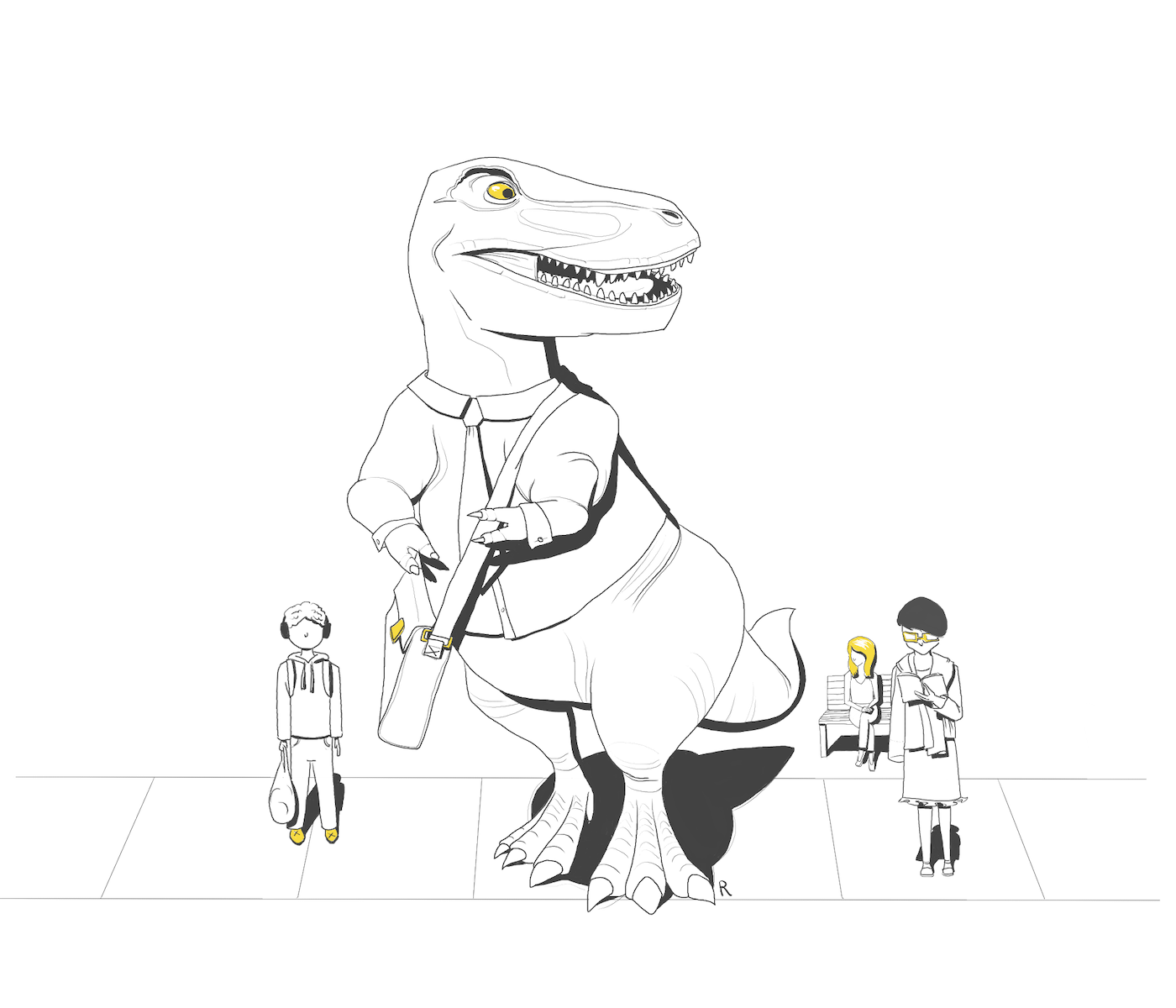The Tyrannosaurus rex is one of the most well-known dinosaurs in popular science culture. Almost anyone can easily identify it, whether they are seasoned paleontologists or fans of the Jurassic World franchise. Once called the “king of all kings,” the T. rex has long been thought of as residing at the top of the late Cretaceous food chain. For years, scientists have studied its long limbs and concluded that the T. rex’s speed, a product of its limb length, aided its hunting prowess.
A recent study conducted in association with McGill’s Redpath Museum, however, has challenged the connection between T. rex’s limb length and speed. Researchers instead found that in larger theropods, including the T. rex, long limbs were selectively adapted for covering large distances over long periods of time rather than for speed. Theropods are a group of carnivorous dinosaurs that are diverse in size and include the largest carnivores ever to walk on Earth.
Using metrics that included body length and mass, researchers were able to demonstrate that, while lighter and smaller theropods were indeed fast, larger and heavier ones moved considerably slower by approximately 20 kilometres per hour.
According to Hans Larsson, director of the McGill Redpath Museum and co-author of the study, the inspiration for the project came while researching the biomechanics of the evolution of dinosaurs into birds.
“We always felt the mechanics of terrestrial locomotion needed a revision for dinosaurs,” Larsson wrote in an email to The McGill Tribune. “Although most previous work focused on top speeds [of dinosaurs], we wanted to examine efficiency and speed. This is very applicable to how ecosystems normally function.”
Data gathered for the study included the limb proportions, body mass, and gaits, the locomotion achieved through the movement of the hind limbs, of many different species of theropod dinosaurs.
“Data was gathered from direct measurements of museum specimens and published measurements,” Larsson wrote. “We had about 70 nearly complete skeletons from across the evolutionary range of carnivorous dinosaurs.”
A difficult aspect of the study was narrowing down the possible methods to test locomotory efficiencies.
“Imagine if you were to walk, jog, or run a kilometre,” wrote Larsson. “Every speed has its own pros and cons, like time and overall energy used.”
The study found that the T. rex’s long legs allowed it and other large theropods to be more energy efficient and increase their endurance. These dinosaurs required less energy to move around compared to their prey and were able to conserve stamina while hunting. The study’s results also highlight the relationship between body size and running speed, suggesting that smaller theropods were much faster than larger ones.
“The implications [of this study] are huge, because we can now begin to design models of how much energy each of these animals needed per kilometre, per day, per lifespan, and per herd,” wrote Larsson. “These are some fundamental numbers that feed into an ecosystem model, and we’ve never been able to have these before for dinosaur ecosystems.”
Researchers also identified certain patterns in the locomotion of some theropod species which have prompted ideas for future studies.
“There are some smaller theropods, like Velociraptor, that had really high estimated speeds,” wrote Larsson. “For these smaller theropods, we can start to look at within-leg bone lengths to generate more accurate walking-running biomechanics to see what kind of ‘gaits’ they had.”
Larsson also pointed out that very large Tyrannosaurs appear to have had efficient locomotion at a variety of running speeds.
Future projects may include modelling the movement and respective energy requirements of Tyrannosaurus at different life stages.
“Something we’re working on right now is estimating these [movement and energy requirements] for a ‘flock’ of Tyrannosaurus called Albertosaurus,” Larsson wrote.
Larsson’s team has already begun to model the demographics of this species of Tyrannosaurus, and hopes that further research will bring forward more insights as to the locomotion of the ancient beasts.






